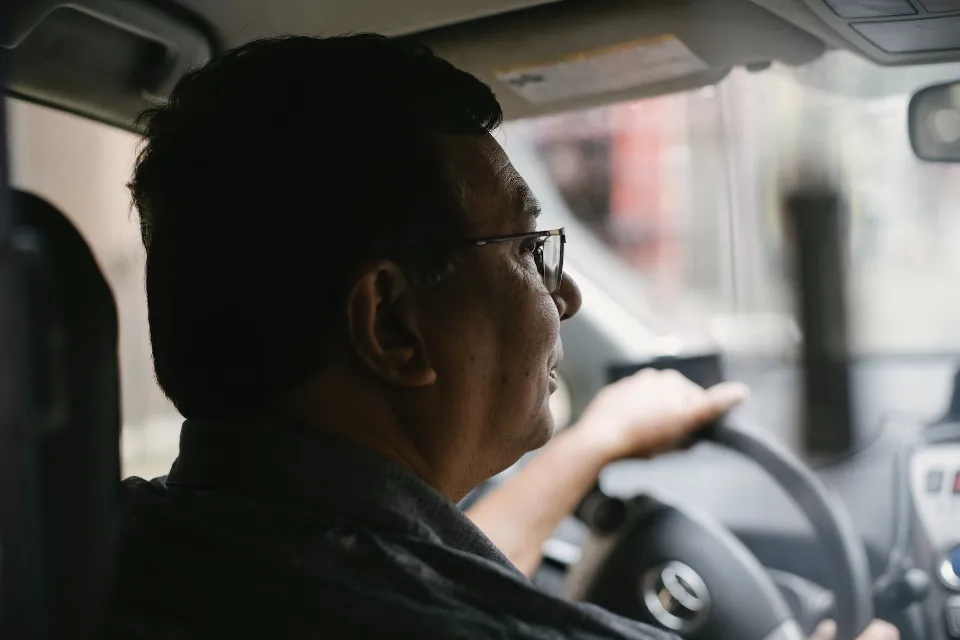Another major issue for older adults without a car or who don’t drive is social isolation. It may result in a lower quality of life and an earlier death. Older adults can maintain relationships with their families, friends, and communities by having access to affordable transportation.
Do you or a loved one need modern transportation? We give you options and questions to ask to assist you in selecting the one that most closely fits your needs.
How Do Seniors Get Around Without a Car?
Home Aide/driver
Depending on the aide’s availability, you can plan a regular weekly schedule for running errands or you can call as necessary for doctor’s appointments or other events. Verify that their license is current and that their vehicle has passed an inspection.
Pros: You establish a relationship with a regular caregiver who gets to know your loved one’s routines and preferences. If necessary, you can then step up to more full-time assistance.
Cons: It might be difficult to arrange a last-minute replacement if the driver is out of town or ill.
Cost: $10-$20 per hour. Search Care for drivers in your area.

Public Transportation
My mother-in-law lives in a city with lots of public transportation options, as opposed to my parents who lived in a suburb where cars were the norm. She doesn’t drive anymore, but she still uses the city buses to get around.
Pros: The bus, tram, or subway may be the quickest and most practical way to travel, depending on where you live.
Cons: The stairs to the train station or the steps up onto the bus can be a significant challenge if you are a wheelchair user or have limited mobility.
Cost: With senior fares for public transportation, as little as $1 per ride.
Uber/Lyft/taxis
There’s always the traditional option of calling a taxi, but if the senior has a smartphone, they can tap it to use ride-sharing apps like Uber and Lyft to order a car wherever they are, whenever they want (or you can order the ride for them).
Despite recently giving up her car, Sarasota, Florida resident Linda Morgenlander, 80, refused to stop participating in the cultural activities she loves there.
Pros: The car is available whenever you need it, so there’s no need to commit to a set schedule. You can see the car’s exact location, license plate information, and driver’s name with a ride-sharing app.
Cons: The driver will change each time, so the quality might differ.
Cost: According to Ridester, the average fare for an Uber or Lyft trip costs between $1 and $2 per mile, or approximately $0.40 per minute. Download the Uber or Lyft apps for exact rates.
Friends Or Volunteers
Numerous neighborhood nonprofits maintain a list of volunteers who offer to take elderly people who are housebound door to door for appointments and errands. To find a program in your state, look at this Google map. Don’t be afraid to ask friends who still drive to give you a ride occasionally if you can’t find a program near you. They’ll probably be delighted to assist, especially if you give them a coffee when you reach your destination.
Pros: It’s free and provides a social outlet along with the ride.
Cons: It depends on where you are to find volunteer drivers.
Cost: A thank you and a smile, plus perhaps that coffee.

Senior Call-and-ride Programs
Barbara Wadyka, 83, decided to sell her car when she relocated from Baltimore to Boulder, Colorado, five years ago in order to be nearer to her daughter and granddaughter. Since then, she has grown to love the city’s Via system, which offers seniors and people with limited mobility a public transportation option (other cities have Access-a-Ride and other variations of this system).
Volunteer Programs
Volunteer transportation programs are free senior transportation services in which volunteers provide door-to-door assistance to seniors and the disabled.
Numerous neighborhood nonprofits maintain a list of volunteers willing to transport senior citizens door-to-door for appointments and errands. Volunteer drivers typically use their own cars and cannot transport motorized wheelchairs. Due to the small number of passengers, the driver can usually help the passengers through the door at their destinations and from their homes.
Pros: In addition to providing transportation, it is free.
Cons: The availability of volunteer drivers depends on your location.
Cost: Free or inexpensive; in that city, usually about the same as buses or subways. To learn about options in your town, contact the Area Agency on Aging in your area. You can also enter your ZIP code at eldercare.acl.gov to find out what transportation options are available in your neighborhood, or you can call the Eldercare Locator hotline at 800-677-1116 for free nationwide assistance.
6 Questions to Think
#1: What is the Cost?
Different costs and fees are incurred by transportation companies because they set their own prices. So before booking a ride, be sure to understand the costs of the services you’re considering.
#2: Do Drivers Undergo Background Checks and Drug Testing?
Despite the fact that the majority of transportation companies run background checks on their drivers, drug testing is not as common.
If this is important to you, make sure to let the transportation provider know.
#3: Do They Offer Convenient Pick-Up Times and Locations?
You should not assume a transportation service will be convenient for you or a loved one. See to it that they provide convenient pick-up times and locations.
Additionally, it would be best to clarify where pick-up will occur. For instance, having a service come to your door is more convenient than having to wait to be picked up across town.
#4: How Long Has the Company Been in Business?
Is it preferable to work with a recently established transportation company or one that is more seasoned? It’s a matter for you to decide.
However, if you value this highly, don’t be hesitant to inquire before making an appointment.
#5: Is the Vehicle Clean and Comfortable?
Although cleanliness and comfort are purely subjective, make sure to ask if you feel that it is important to you.
#6: What Do Online Reviews Say?
You can get an impression of transportation service by reading reviews left by previous customers. Reviews from customers are generally truthful, making them a great resource for learning about any business or driver.
Conclusion
Young adults have the ability to get into a car, take the wheel, and drive off without a second thought. But for a growing number of seniors, getting out and about on a daily basis is now a huge challenge. As we age, health issues may make driving a car challenging, necessitating the discovery of alternate modes of transportation. You will be motivated by the ways mentioned above.



